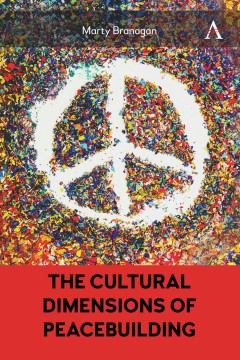The Cultural Dimensions of Peacebuilding
By Marty Branagan
Other Formats Available:
- About This Book
- Reviews
- Author Information
- Series
- Table of Contents
- Links
- Podcasts
About This Book
This broad-ranging monograph examines the potential creation, through the arts and culture, of societies that enjoy sustainable, positive peace. It begins with a critique of the pervasive nature of militarism and violence embedded deep in the cultural fabric of many societies, influencing the language and discourses we use, the films we watch, our museums and histories, our journalism, and our education systems. It also examines the roots of violence in our parenting styles, gender roles, and spiritual practices.
It contrasts this with an examination of a number of peaceful societies that already exist, drawing useful lessons from their cultures. It critiques discrepancies in history education with regard to war and peace and examines artistic and cultural processes, institutions, and artifacts designed to create peace, such as peace museums and parks, peace journalism, peace education, and resistance to violence through cultural means, such as film-making, fine arts, satirical theatre, and protest music. It examines the efficacy of these attempts and suggests positive ways forward. It also explores the role of gender in creating cultures of peace and the impacts on peacebuilding of cultivating peace within.
The book commences with an explanation of cultural violence and its underpinning of direct, structural, and ecological violence. Solutions-oriented and optimistic, each chapter begins with a critique of cultural violence in the subject area before moving to examples of positive cultural currents striving to embed sustainable peace deep within societies. It aims to inspire deep understanding, individual reflection, community empowerment, and grassroots action for peace in cultural spheres.
Reviews
Author Information
Dr. Marty Branagan is Senior Lecturer in Peace Studies at the University of New England, Australia, and a long-term artist and activist. He is the author of two novels, two monographs, two co-edited books, and more than forty chapters and articles.
Series
Table of Contents
Figures; Acknowledgement; 1. Introduction;2. Language, Narratives and Discourses; 3. Film Violence and Peace; 4. Peaceful Cultures Already Exist; 5. Peace History: Museums, Memorials, Parks and Gardens; 6. Peace Journalism and Writing; 7/. Domestic Peace; 8. Peace Education; 9. Gender, Sexuality and Peace; 10. Artistic Activism; 11. Peace Within; Appendix; Index
Links
Stay Updated
Information
Latest Tweets



